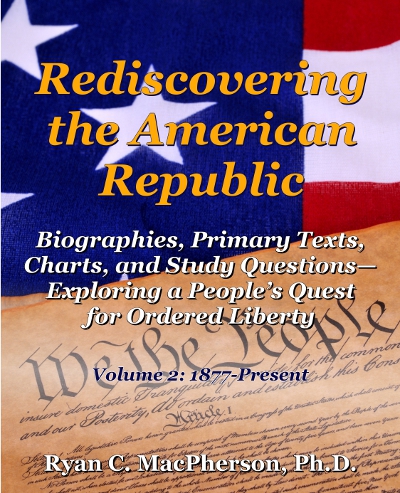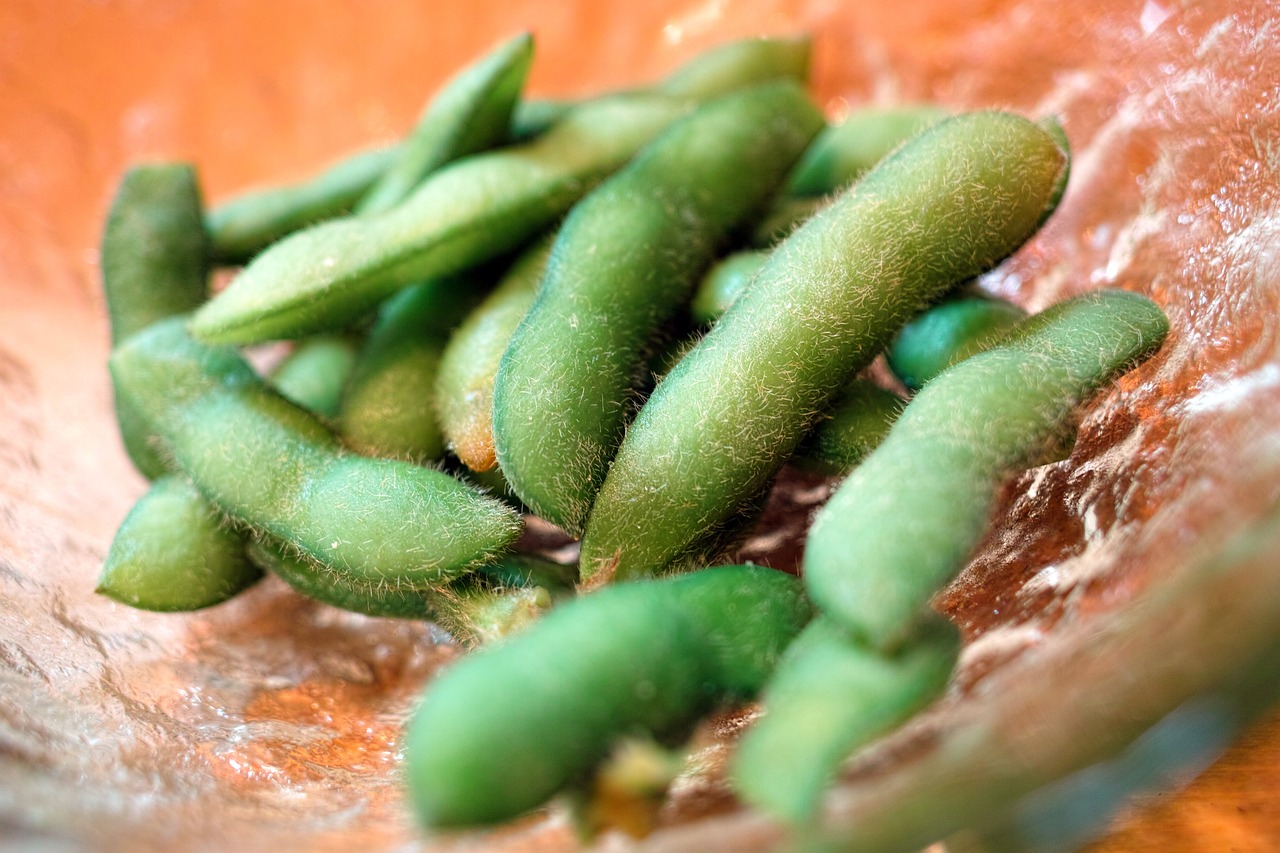The Bad Bean
A Science Research Paper by Rose MacPherson
In C. S. Lewis’ well-loved book The Silver Chair, Jill Pole expresses her delight at the delicious breakfast she was treated to at the end of the story, and her relief that it would not contain soybeans. “Jill [could]... smell... sausages, and more, and more, and more sausages. And not wretched sausages half full of bread and Soya Bean either, but real meaty, spicey ones, fat and piping hot and burst and just the tiniest bit burnt” (203). Though Jill is only an imaginary character in a mere children’s book, she was on to something. I do not believe that soy should be used as food. I will begin by giving several facts about soy and agriculture. I will continue by revealing the many food products in which soy is found. I will explain the numerous health problems that soy consumption will cause. I will conclude by identifying the proper uses for soy.
First, let’s examine soy as a crop. “Soya is a very big business, particularly in the USA” (Campbell 112). In fact, soy is the third leading crop in the United States, most of it being grown in Iowa and Illinois (Harper 683). America grows “more soybeans than any other country,” almost 70% of the world’s soy (683). Most soy is genetically modified and sprayed with many pesticides, making it an extremely inexpensive product (Campbell-McBride 112-113). One source claims that “the soybean is one of the world’s most useful...sources of protein” (Harper 683). However, this “usefulness” is because of its low cost, not because soy is a nutritious food, as you will discover. Even so, the prices are rising! “Soy foods are now nearly as expensive as meat and pricier than dairy” (30). Those are a few facts about soy, one of America’s biggest crops.
Second, very many – if not most – processed foods contain soy. “Up to 60% of processed foods... contain [soy protein isolate]” (Campbell-McBride 113). Please note that this percentage does not include other kinds of soy. “Soy proteins have been hiding in chopped meat mixes such as preformed hamburger patties, readymade meat loaves, spaghetti sauces and even some brands of fresh ground beef for years” (Daniel 87). One source mentions that soy is made into pseudo cheese, burgers, hot dogs, “chicken” nuggets, ice cream, and yogurt (Perlmutter 253). Besides these items, soy “can be found in many processed foods, margarines [sic], salad dressings and sauces, breads, biscuits, pizza, baby food, children’s snacks, sweets, cakes, vegetarian products, dairy replacements, infant milk formulas, etc” (Campbell-McBride 113). In addition, “most [protein bars] are soy based” (Allison and Barrett 136). Most farm animals are fed a diet quite high in soy (Perlmutter 89). This would include farm-raised fish (Allison and Barrett 177). When people eat the beef, pork, and fish from animals fed in this manner, they are practically eating soy. “Most commercial breads today contain small amounts of soy flour, even though they are not labeled as soy products” (Daniel 81). Forms of soy are sometimes added to orange juice (96). Those are only a few of the many examples of food – processed or otherwise – in which soy can be found. Now that I have revealed the many processed foods in which soy is found, let’s next discover what harm soy has the potential to cause. Soy can cause cancer, block minerals and inhibit enzymes, make for intestinal problems and growth retardation, lead to autoimmune thyroid disease, and be the cause of protein assimilation problems. In fact, soy is included in the Food and Drug Administration’s “Poisonous Plant Database” (31). Let’s take a look at some of these risks.
Soy protein isolate will cause cancer because it is contaminated with aluminum, which is carcinogenic. Aluminum, which is also a brain toxin, links soy consumption with dementia (Bollinger 477). Just how is this soy protein isolate made? “After removing the fibre with an alkaline solution the soybeans are put into large aluminium tanks with and acid wash. Acid makes the soybeans absorb aluminium, which will remain in the end product. ...After the aluminium-acid wash the beans are treated with many other chemicals including nitreates, which have been implicated in cancer development” (Campbell-McBride 113). Even before soy is processed in this manner, it is already carcinogenic. Soy contains phytates, phytoestrogens, and enzyme inhibitors, which are themselves cancer-causing (Fallon 29). Trypsin inhibitors are also quite plentiful in soy. These nasty little things make the digestion of protein almost impossible, and they are also carcinogenic. “Soy isoflavones [another name for phytoestrogens] cause breast cancer cells to grow” (Bollinger 467)! In summary, phytoestrogens, trypsin inhibitors, and aluminum are all found in soy, putting those who eat soy at a high risk for cancer. Another concern about soy is the fact that it contains high levels of phytates. Phytates are substances that block the absorption of micronutrients, or vitamins and minerals. “Soybeans have some of the highest phytate levels” (Allison and Barrett 10). These phytates, which are also called phytic acid, make it extremely difficult – if not impossible – for the body to absorb the minerals calcium, magnesium, copper, iron, and zinc (Bollinger 467). Many other foods, such as nuts, beans, lentils, and grain, also contain phytic acid; however, these phytates can be – and are – broken down by processes such as soaking, sprouting, and cooking. The phytates in soy, on the other hand, are much more harmful because they do not respond to these methods of elimination. The phytic acid found in soybeans are “only deactivated by fermentation and not by ordinary cooking” (Fallon 62). Because of these frightful phytates, soy consumption will lead to mineral deficiencies. Sadly, “soy protein blocks iron absorption even when all the phytic acid has been removed” (Nagel 60).
As mentioned earlier, many people argue that the soybean is one of the world’s most useful sources of protein. But is this really true? “Animal protein is our only source of complete protein” (Fallon 26), although some sources also count quinoa as a complete protein (Nischwitz 130). Some people are under the impression that soy, too, is a complete protein, as it technically contains all of the essential amino acids; however, “it is so low in two [of these] that it cannot serve as a complete protein” (496). Amino acids are the substances of which protein is built up of. Eight of the twenty-two amino acids are essential, by which is meant that the body cannot produce them. “If just one essential amino acid is low or missing, the body is unable to synthesize the other proteins it needs, even when overall protein intake is high” (26). In soy, two of the essential amino acids are quite low. These are called methionine and cystine (Bollinger 477). That is why I do not believe that the aforementioned claim – that the soybean is one of the world’s most useful sources of protein – is accurate. As Nourishing Traditions says, “health cannot be maintained on a diet that omits animal protein” (496).
Chemicals are yet another issue with soy. Soybeans are heavily sprayed by fungicides and insecticides (Harper 962). “Most soy is genetically modified” (Allison and Barrett 10). One would also wonder if soybeans, which grow along the highways, are exposed to the pollution caused by traffic at any hour of the day or night. And all this takes place even before the soy is processed! The dangers of aluminum contamination have already been covered. In addition, “food manufacturers are now using a toxic chemical called hexane to process soy” (Bollinger 478). Because of all of these ways in which soy is exposed to chemicals, it is quite toxic. “Soy is generally not recommended,” says Dr. Dominik Nischwitz, a naturopath and holistic dentist from Germany and international speaker (130). “This deadly ‘food’ belongs in the toxic waste dump,” one source is bold enough to proclaim (Bollinger 479). I can’t say I disagree.
Because of those many concerns – that this food can cause cancer, thyroid problems, and intestinal problems and also block minerals, vitamins, and nutrients – it is best to avoid “questionable foods like soy” (Fallon 58).
Although up until now I have only mentioned the terrible troubles that soybeans will cause you, there are actually many good uses for soy as well. When God made the earth and all vegetation, He “saw that it was good” (Genesis 1:12). Even though the world is now corrupted, soy can still be used for good. Soybeans can be useful for many non-food items. For instance, my planner has been printed using soy-based ink. “Soy meal is... used in manufacturing such products as... fire extinguisher fluid, insect sprays, and paint” (Harper 690). Adhesive tape, leather softeners, and carbon paper are often made from soybean oil (691). Soybean oil has also been used to light lamps (Daniel 14). The soy hot dog has been called a “rubbery concoction,” and it is very bouncy (86). We should be making bouncy balls out of this stuff, not eating it! Soy oil can also be used in the production of paint and soap (104). I find it fascinating to know that “Most soybean meal was used as fertilizer until the mid-1930’s” (Harper 692). Soybeans were originally not cultivated as a food source, but as a way to put nitrogen back into the soil (Fallon 201). “Spun soy protein fibers are not much different from plastic fibers” (Daniel 95). This gives soybeans the potential to be useful in the manufacturing of many useful items, although it also contributes to the evidence that soy is quite detrimental to one’s health. The most interesting use for soy is in the manufacturing of automobiles. In 1937, Henry Ford designed and built a “soymobile,” although he never made more than one. The plastic produced from the soybeans turned out to be stronger than steel (Daniel 18). With all of these excellent, health-preserving uses for soy, why would anyone bother to eat it?
Many studies show that if soy is fermented, on the other hand, it is not so harmful. While many researchers have identified “its negative effects, there are some studies that show the opposite” – once it has been fermented, that is (Allison and Barrett 10-11). “Soybeans should be eaten only after they have been fermented” (Fallon 495). The process of fermentation breaks down the phytates, which makes for easier absorption of nutrients – especially zinc (248). “The Chinese had learned to ferment soy beans to make them edible” (201). It is interesting to note that one source defines soy as “a sauce made from soybeans fermented in brine” (Merriam-Webster 686, emphasis added). Fermented soy products, such as Miso, can be a good source of probiotics, or healthy bacteria (Sonnenburg 107). Miso, along with egg yolks and greens, is a good source of vitamin K (Fallon 39). “Soybeans must... only [be used] as fermented products like miso, natto and tempeh” (62). However, these benefits do not apply to modern soy sauce, even though it claims to be fermented. “Traditional soy sauce is made by a fermentation process that takes six to eight months to complete” (Fallon 147). It only takes two days for the modern kind. “Fermented soy products, such as special fermented soy drinks (not available in the store), natural soy sauce, miso and tempeh can be acceptable. However, use fermented soy with care and awareness” (Nagel 85). Although fermented soy has no phytates, please remember that the phytoestrogens still remain (Fallon 62). “Natto (special fermented soybeans) or the enzyme from natto, nattokinase increases blood circulation and can help reduce infections” [sic] (144). Another benefit of natto is the “extremely powerful” probiotic Bacillus subtilis. This strain of healthy bacteria is proven to be excellent for the strengthening of the immune system (Axe 121). “Miso... [is] believed to stimulate the digestive system and energize the body for the day ahead. The fermentation process produces a rich, complex flavor” (Axe 122). So you see, soybeans can actually be beneficial to one’s health after undergoing a long period of fermentation.
We have now looked at several facts about soy and agriculture, realized how many food products soy is found in, discussed the numerous health problems that soy consumption will cause, and discovered the proper uses for soy. I am sure you can agree with me that soybeans should not be used as food. We can all say, along with Jill, that we would much rather not have soybeans in our sausages.
Works Cited:
- Allison, Serene and Barrett, Pearl. Trim Healthy Mama. Perfec Type: Nashville, TN 2012.
- All Scripture quotations are taken from the King James Version.
- Axe, Josh. Eat Dirt. Harper Wave: New York, NY 2016.
- Bollinger, Ty M. Cancer – Step Outside the Box. Infinity 5105 Partners: USA 2014.
- Campbell-McBride, Natasha. Gut and Psychology Syndrome. Medinform Publishing: York, Pennsylvania 2010.
- Daniel, Kaayla T. PhD, CCN. The Whole Soy Story. NewTrends Publishing: Washington, D. C. 2005.
- Fallon, Sally. Nourishing Traditions. NewTrends Publishing: Washington, D. C. 2001.
- Harper, J. E. “Soybean.” The World Book Encyclopedia. Vol. 18. Chicago: 1990.
- Lewis, C. S. The Silver Chair. Collier Books: New York: 1978.
- Nagel, Ramiel. Cure Tooth Decay. Golden Child Publishing: Los Gatos, CA 2011.
- Nischwitz, Dominik. It’s All in Your Mouth. Chelsea Green Publishing: White River Junction, VT, 2020.
- Perlmutter, David MD. Grain Brain. Little, Brown Spark: New York, NY 2018.
- Sonnenburg, Justin and Erica, PhDs. The Good Gut. Penguin Press: New York, NY 2015.
- The Merriam-Webster Dictionary. Merriam-Webster, Incorporated: Springfield, Massachusetts 2016.



